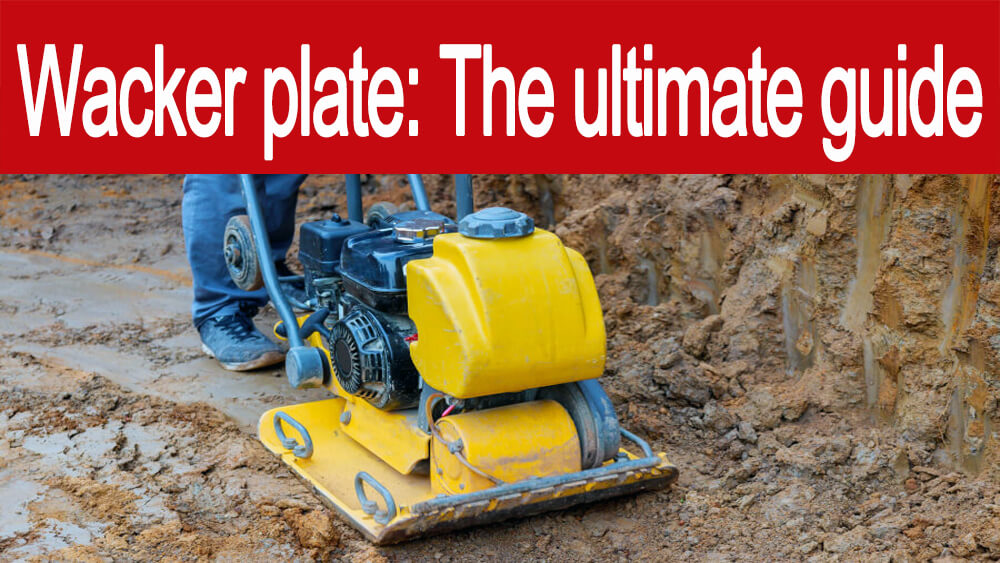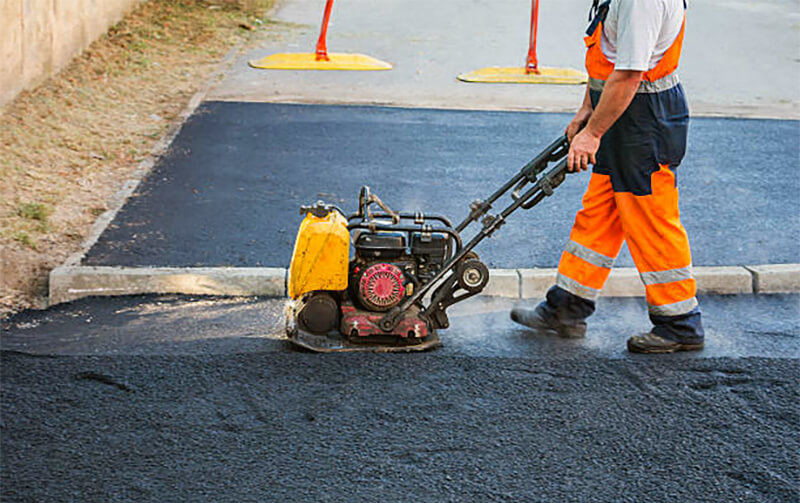28Jun 2023
table of contents
Compaction plates or plate compactors are commonly referred to as wacker plates. They are used for heavy-duty compaction and are the perfect equipment for an excellent solid foundation.
Wacker plates are used to compact soil, core, sand and tarmac, so if you are building a summer house, garden room/office or garage, you must compact the ground before starting construction. A build like this needs a good solid foundation to work. For example compaction using BISON wacker plates.

Wacker panels are available in a variety of sizes. Most plate compactors and wacker plates are gasoline or diesel-powered. You can consult the supplier of BISON wacker plate to know more.However, you can also get electric wacker plates. It's worth noting that you should only use petrol or diesel plate compactors in well-ventilated areas. They should not be used indoors. Use an electric plate compactor if you work indoors and need to compact soil indoors.
Most wacker plates are operated with forward motion, but you can also purchase reversing wacker plate compactors. BISON Reversible wacker plates have a simple switch that allows the wacker plate or plate compactor to move forward or backwards. This is great if you want to compact trenches or backfill around foundations.
What type of different soils are you dealing with? Purchasing wacker plate also needs to consider the diversity of soil conditions you are using。 Use a vibrating plate compactor to work with granular soil like sand or gravel. They can be compacted, whether wet or dry. Soils with a higher clay content will benefit from trench ramming. Wacker plates use vibration to compact the ground, while trench compactors use direct impact. Purchase a wacker plate if you work on a large scale. But as the name suggests, purchase a ditch hammer if you work in ditches. Trench rammers are great for tight spaces.
Where can wacker plate be used? Wacker plates excel in tight spaces, such as back gardens, where larger rollers cannot access. Types of use include:
BISON wacker plates are the perfect machine for landscaping and gardening, such as preparing the soil for lawn maintenance and creating an even sandy base before laying outdoor paving slabs.
Asphalt and roadbed those material will be compacted to form a flat by wacker plates, firm surface for paving or compacting the ground after trenching.
Gravel in driveways or recreational spaces can be compacted to reduce movement and ensure the area remains tidy and safe.
Whether it's a tiny job or a large commercial job, BISON think using a wacker plate is a smart choice, to create a stronger foundation, ensure safety and stability.

There are two types of wacker plates: forward reverse plate tamper
Unlike reversible wacker plates, they only move forward because you can't go backwards!
Single wacker plates are the most popular options for small jobs like landscaping and paths that don't require backing. Since you can't reverse it, it's wise to check that the end of the compaction path has enough room to rotate!
They're lighter than double-sided models, so they're easier to move around the site, and while you won't need to push them while you're working, you'll still need to maneuver them, which will be easier with lightweight models.
Ideal for long driveways and road construction. You can save a good amount of time by eliminating the need to adjust positions constantly by reversing the machine to avoid heavy labor.
They feature a wide base plate and deeper "spot" compaction for increased productivity and lower overall labor costs.
Because reversible models are heavier, they are suitable for heavy-duty jobs with materials that require more weight to compact.
If you're laying a new driveway or yard and need to compact the foundation properly, your shiny new driveway won't last. Water can get into any cracks or air pockets, and the driveway or patio could crack if frost forms. purchase BISON wacker plates ensure the ground is compacted correctly to enjoy your craft at the right time.
A wacker plate removes air voids, applying force to the ground to create a strong and solid foundation. It has a high-frequency vibrating plate that helps the machine move naturally, so you don't need to push it hard, although you need to guide it in the right direction!
It goes without saying that when working with any compaction plates, it is essential to use good safety practices to ensure your safety and that of others on site.
Always wear the correct PPE gear – including steel cap boots, hearing protection, eye protection, dust mask and gloves with good grip.
Two people should lift it when moving (if the machine is suitable for manual lifting).
Make sure there are no foreign or external objects on the ground.
Always hold the compactor with both hands.
Make sure to stand on your feet when operating.
Keep feet, hands, and loose clothing away from the moving parts of the compactor.
Ensure the work area is clean and also clear of any obstacles, steep slopes or uneven ground.
Yes, you can use BISON wacker plate on dirt, but you should make sure you've checked the type of dirt you want to compact before you start, as there are different types of soil.
More granular dirt cannot be molded like solid clay dirt.
You should ensure the soil has the correct moisture level, as too little will prevent the particles from clumping together and compacting; too much will create voids and reduce ground strength.
Important tip: get the wet dirt, grab a handful, and see how it sticks. Too brittle means it's too dry; if you can squeeze the water out, it's probably too wet. If it holds together, it should be fine for compaction.
No, you don't necessarily need to wet the gravel before compacting, but a little water can help reduce dust levels. Just make sure not to get the area too wet.
Wacker plates are heavy machinery. BISON, a reputable wacker plate manufacturer, can provide wacker plates at wholesale rates. If you have questions about electric wacker plates, vibratory wacker plates, diesel wacker plates and reversible plate compactors, please contact a member of BISON team. Our knowledgeable and friendly team is here to make tool purchasing easy, and we offer the best wacker plate rates.
inquiry form here
BISON BLOG, All the latest news and views from Bison Machinery.